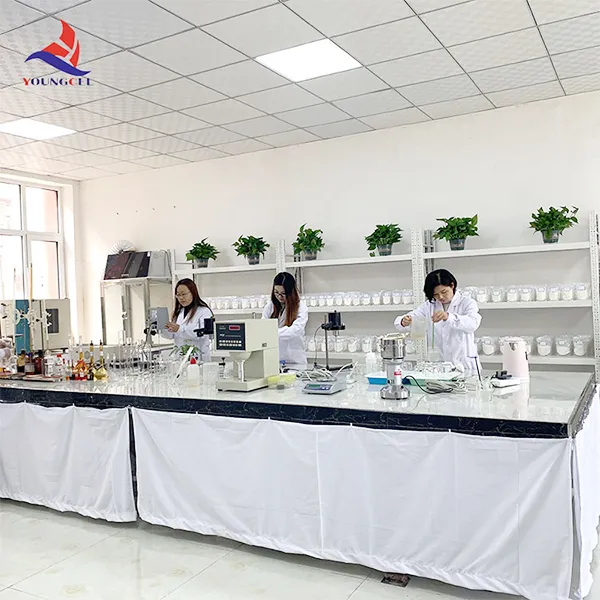The Versatility of Cellulose Ethers in Modern Applications
Cellulose ethers are a remarkable group of compounds derived from cellulose, a natural polymer found in the cell walls of plants. These ethers play an essential role in various industries due to their unique properties, which include excellent solubility in water and organic solvents, high viscosity, and the ability to form gels and films. This article explores the significance, applications, and advantages of cellulose ethers in today's world.
What are Cellulose Ethers?
Cellulose ethers are created by chemically modifying cellulose through the process of etherification. This involves substituting hydroxyl groups (–OH) in the cellulose molecule with ether groups (–O–R). The most common types of cellulose ethers include methyl cellulose (MC), ethyl cellulose (EC), hydroxypropyl cellulose (HPC), and hydroxypropyl methyl cellulose (HPMC). The modification imparts specific characteristics that are not present in native cellulose, making these compounds highly functional and adaptable.
Applications in the Food Industry
One of the most significant uses of cellulose ethers is in the food industry. They are often utilized as thickeners, emulsifiers, and stabilizers in various products. For instance, hydroxypropyl methyl cellulose (HPMC) is widely used in gluten-free baked goods to improve texture and moisture retention. Additionally, cellulose ethers are employed in sauces, dressings, and dairy products to enhance consistency and mouthfeel without altering the flavor profiles. Their ability to retain water also helps extend the shelf life of perishable items.
Pharmaceutical and Medical Applications
Cellulose ethers also hold a pivotal role in the pharmaceutical sector. They are used as excipients in drug formulations, allowing for controlled release of active ingredients. Hydroxypropyl cellulose, for example, is used in tablet formulations to improve disintegration and dissolution rates, ensuring that the medication is effectively absorbed by the body. Furthermore, cellulose ethers are incorporated into gels and pastes for topical applications, providing a soothing effect while enhancing the delivery of therapeutic compounds.
cellulos ether

Cosmetic and Personal Care Uses
In the cosmetic and personal care industry, cellulose ethers are valued for their thickening and binding properties. They are often found in lotions, creams, shampoos, and other formulations. The ability of cellulose ethers to create a smooth texture helps improve the overall sensory experience for consumers. Moreover, their film-forming properties can provide a sustained release of active ingredients, making them advantageous in skin-care products.
Construction and Adhesives
Cellulose ethers are also employed in construction materials as additives to improve workability and performance. They enhance the viscosity of cement and plaster mixtures, making them easier to apply and less prone to sagging. Additionally, cellulose ethers are used in adhesives and sealants, where they contribute to the consistent application and adhesion along with water retention, ensuring a strong bond between surfaces.
Environmental Impact and Sustainability
Notably, cellulose ethers are derived from renewable resources, making them a more sustainable choice compared to synthetic alternatives. As industries continue to seek environmentally friendly solutions, cellulose ethers present an excellent option. Their biodegradability and non-toxic nature further contribute to their appeal in various applications.
Conclusion
In summary, cellulose ethers are versatile compounds that have found immense utility across multiple sectors, including food, pharmaceuticals, cosmetics, and construction. Their unique properties not only enhance product performance but also align with the growing demand for sustainable solutions. As research and development in cellulose chemistry continue to evolve, we can expect even more innovative applications of this remarkable class of compounds, reinforcing their importance in our daily lives and industries.
-
Rdp Powder: Key Considerations for Wholesalers in the Building Materials IndustryNewsJul.08,2025
-
Key Considerations for Wholesalers: Navigating the World of Hpmc - Based ProductsNewsJul.08,2025
-
Hpmc Detergent: Key Considerations for WholesalersNewsJul.08,2025
-
Key Considerations for Wholesalers: China Hpmc For Tile Adhesive, Coating Additives, Concrete Additives, and MoreNewsJul.08,2025
-
Crucial Considerations for Wholesalers: Navigating the World of Construction MaterialsNewsJul.08,2025
-
Key Considerations for Wholesalers Sourcing Additive For Cement, Additive For Concrete, Additive For Putty from Additive Manufacturer Shijiazhuang Gaocheng District Yongfeng Cellulose Co., Ltd.NewsJul.08,2025




